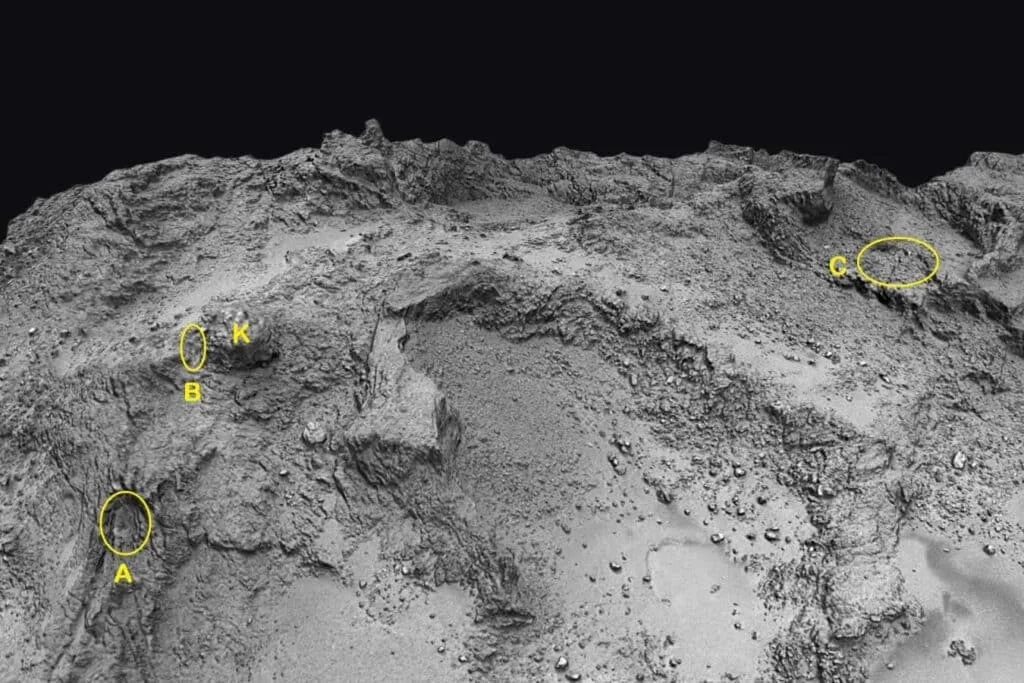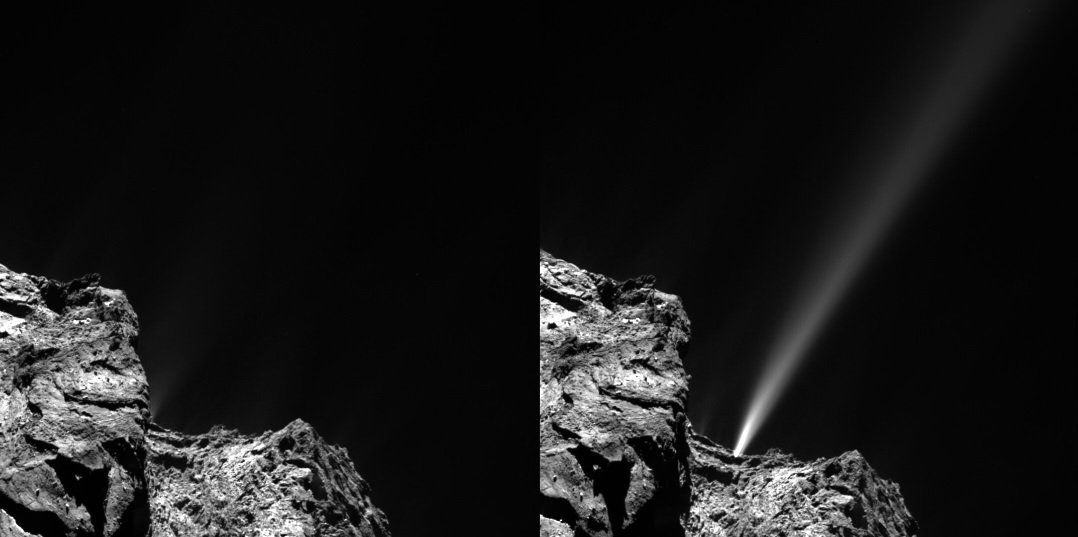Comet Churyumov-Gerasimenko (67P/Churyumov-Gerasimenko) is now the only object of its class studied by a spacecraft that has been near it for a long time. From August 2014 to September 2016, the European Rosetta probe took more than a hundred thousand photos of the surface of the nucleus of the comet and transmitted a huge amount of information. Analyzing it, scientists have recently discovered deep depressions in the nucleus, similar to caves. These structures may explain some cases of “tailed star” flares.
A group of researchers from the French National Center for Space Research (CNES), led by Philippe Lamy, selected from a huge number of photographs “paired” images of the same surface areas obtained from approximately the same distance, but from different angles. After computer processing, they obtained three-dimensional maps that allow them to calculate the relative height of individual points. At one of the studied sites, photographed on April 9-10, 2016, scientists found three caverns with a depth of 20 to 47 m.

Such deep “caves” on the comet are observed for the first time, although their existence has already been theoretically predicted. They may be remnants of jets — ejections of cometary matter into space, responsible for the flares of brightness of these celestial bodies. We are talking about the fact that in certain areas of the nucleus there are concentrated thickenings of volatile compounds such as water ice, “dry ice” (solid carbon dioxide), frozen ammonia or even methane and carbon monoxide. Warming up as they approach the Sun, these compounds begin to evaporate intensively, forming a powerful gas jet, while the surrounding rocks — stony or high-molecular organic substances — remain “in place” and form the walls of the future cave.
Comparing the data on the illumination of one side of the nucleus of the comet by the Sun with the moments when the jets were registered, the researchers found that a particularly powerful ejection, photographed on July 18, 2015, most likely arose due to the warming with sunlight of one of the three cavities found. Now experts are engaged in searching for such coincidences to confirm their conclusions.

Unfortunately, the Philae auxiliary spacecraft — the first ever automatic scout that made a soft landing on a cometary nucleus — could not fully fulfill its scientific program, so we still do not know the exact composition of the rocks that make up comets. Scientists hope to gain more information about it through further analysis of Rosetta probe data, as well as spectral studies of other “tailed stars”. As for the comet Churyumov-Gerasimenko specifically, accurate measurements of the velocity of this probe can help us here, which will allow us to draw conclusions about the heterogeneity of the gravitational field of its nucleus, and therefore about its internal structure.
According to www.newscientist.com
Follow us on Twitter to get the most interesting space news in time
https://twitter.com/ust_magazine


